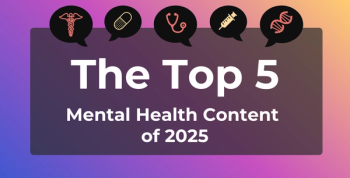
How Workforce Innovation Can Sustain the US Health Care System
Key Takeaways
- The aging US population is increasing demand for healthcare, with those aged 65+ projected to rise by 47% by 2050.
- Workforce shortages and employee burnout are major challenges, with nearly half of healthcare workers reporting staffing issues.
A new TIAA Institute report says solving workforce shortages with smarter hiring, training, and artificial intelligence could ease the rising demand for care from an aging population.
The US health care system is bracing for unprecedented pressure as the population ages, costs rise, and workforce gaps widen.1 A new
"As the US population ages, hospitals and health systems face an increasingly critical question: how can they hire, train, retain, and support enough employees to meet the rising demand for care while still maintaining cost-efficiency and long-term financial health?" said Colin Pierce, healthcare national practice leader, TIAA,
The US is experiencing an unprecedented demographic shift as baby boomers age, dramatically reshaping the population landscape.2 Americans aged 65 and older are projected to grow from 58 million in 2022 to 82 million by 2050—a 47% increase—raising their share of the total population from 17% to 23%. This growth coincides with an overall aging trend, as the median US age has risen from 30.0 years in 1980 to 38.9 years in 2022, with one-third of states reporting a median age above 40 years.
The new report found that the US health care system is facing multiple challenges: an aging population is driving higher demand for care, persistent workforce shortages, and stagnant productivity over the past 2 decades.1 Employee burnout and high turnover were identified as major contributors to these inefficiencies, with nearly half of health care workers reporting staffing shortages and a lack of resources, and more than half citing stress and burnout as critical issues.
Drawing on data from the 2023 Healthcare Workforce Survey, a previous report examined how full-time employees, including nurses, physicians, administrative staff, and other professionals, prioritize job features and benefits.3 Key findings showed that 21% of health care employees are at risk of leaving within 2 years, with salary, benefits, and work-life balance ranked as the most important job features.
Although health care employment rebounded after pandemic-related declines, adding 2.6 million jobs by March 2024, many hospitals continue to struggle with high vacancy rates, particularly among registered nurses.4 In addition, wage growth of 20% over the past 4 years has not fully alleviated dissatisfaction, as only 52% of health care employees feel fairly compensated—the lowest rate across all industries, according to the new report.
Additionally, the report emphasizes that addressing these challenges requires a multifaceted approach, including recruiting from untapped talent pools, improving workplace conditions, leveraging technology like AI to streamline administrative tasks, and offering financial wellness programs such as guaranteed lifetime income solutions to attract and retain staff.
By taking these steps, health systems can better position themselves to meet growing demand while maintaining cost-efficiency and long-term sustainability.
"As health care faces unprecedented workforce challenges, employers who invest in comprehensive financial wellness programs that include lifetime income solutions will have a significant advantage in recruitment and retention," said Surya P. Kolluri, head of TIAA Institute, in a statement.1 "These offerings provide the income security that today's health care workforce increasingly demands."
References
1. New report offers solutions to health care staff turnover, employee stress and burnout ahead of 2050 predicted surge in aging patients. News release. TIAA Institute. August 20, 2025. Accessed August 20, 2025.
2. Fact sheet: aging in the US. Population Reference Bureau. January 9, 2024. Accessed August 20, 2025.
3. Yakoboski P. Toward an employee value proposition (EVP) in the health care sector. TIAA Institute. Accessed August 20, 2025.
4. Holzapfel D, Kolluri SP, Ollen A, et al. Towards creating a sustainable US health care system navigating workforce productivity, and financial wellness challenges. TIAA Institute. Accessed August 20, 2025.
Newsletter
Stay ahead of policy, cost, and value—subscribe to AJMC for expert insights at the intersection of clinical care and health economics.







































